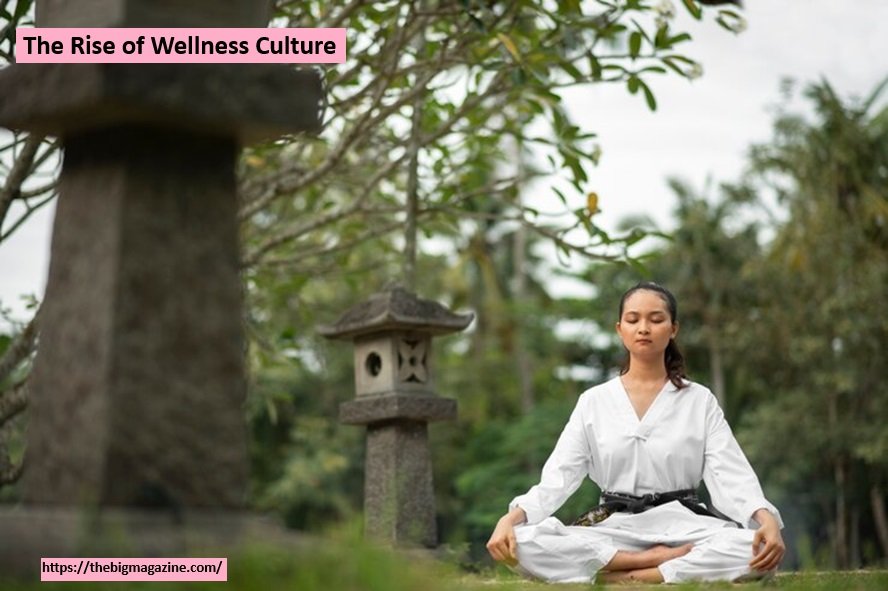In recent years, the concept of wellness has transcended beyond niche markets and become a global phenomenon. The rise of wellness culture reflects a shift in societal values towards self-care, mental health awareness, and overall well-being. This transformation did not occur overnight; it is the result of evolving attitudes towards health, the influence of social media, and a growing body of research highlighting the importance of holistic health.
The Evolution of Wellness Culture
From Alternative to Mainstream
Wellness was once considered a luxury, reserved for those who could afford spa retreats, organic food, and holistic therapies. However, the modern wellness movement has democratized self-care, making it accessible to a wider audience. The evolution of wellness culture can be traced back to the early 20th century, but it gained significant traction in the 1970s with the rise of alternative medicine and holistic health practices.
As more people began to question traditional healthcare systems, alternative approaches like yoga, meditation, and herbal medicine started to gain popularity. This was the beginning of a cultural shift towards preventative health, where individuals took a proactive approach to their well-being. The wellness movement of the 21st century is not just about physical health; it encompasses mental, emotional, and spiritual wellness as well.
The Role of Social Media in the Wellness Boom
Social media has played a pivotal role in bringing wellness culture to the forefront. Platforms like Instagram and YouTube have become hubs for wellness influencers who share their journeys, tips, and products with millions of followers. These influencers have made wellness aspirational and accessible, inspiring people to incorporate self-care practices into their daily lives.
The visual nature of social media has allowed wellness brands to market their products in an engaging and relatable way. From smoothie bowls to morning meditation routines, social media has turned wellness into a lifestyle that is both trendy and attainable. The hashtag #selfcare alone has over 60 million posts on Instagram, highlighting the widespread interest in the topic.
The Pillars of Wellness Culture
Physical Wellness
Physical wellness remains a cornerstone of the wellness movement. However, the approach to physical health has shifted from purely aesthetic goals to a focus on overall well-being. This includes regular exercise, balanced nutrition, and adequate sleep. The fitness industry has adapted to this trend, offering a variety of classes and programs that cater to different needs and preferences.
The rise of boutique fitness studios, online workout programs, and wearable fitness technology has made it easier for individuals to track their progress and stay motivated. Nutrition has also evolved, with a growing emphasis on whole foods, plant-based diets, and mindful eating practices. The connection between diet and mental health has further underscored the importance of a holistic approach to wellness.
Mental and Emotional Wellness
Mental and emotional wellness have become central to the conversation around self-care. The stigma surrounding mental health issues is gradually diminishing, and there is a growing recognition of the importance of mental well-being. Practices like meditation, mindfulness, and therapy are now widely accepted as essential components of a healthy lifestyle.
The COVID-19 pandemic has further accelerated the focus on mental health, as people around the world faced unprecedented stress and anxiety. The demand for mental health resources, including virtual therapy sessions and mental wellness apps, has surged, making these services more accessible than ever before.
Spiritual Wellness
Spiritual wellness is another key pillar of the wellness movement. While spirituality is often associated with religion, in the context of wellness, it is more about finding meaning and purpose in life. This can be achieved through practices like meditation, journaling, or spending time in nature.
Many people are turning to mindfulness and other spiritual practices as a way to cope with the challenges of modern life. These practices offer a sense of grounding and connection that is often missing in our fast-paced, technology-driven world.
The Commercialization of Wellness

Wellness as a Multi-Billion Dollar Industry
The rise of wellness culture has not gone unnoticed by businesses. The global wellness industry is now worth over $4.5 trillion, with sectors like beauty, fitness, nutrition, and mental wellness all contributing to this massive figure. The commercialization of wellness has led to an explosion of products and services designed to help people achieve their health goals.
From organic skincare products to wellness retreats, the market is flooded with options for consumers. However, this commercialization has also led to some criticism, with concerns about the commodification of self-care and the potential for wellness practices to become superficial or exclusionary.
The Role of Technology in Wellness
Technology has been a driving force in the expansion of the wellness industry. The proliferation of wellness apps, wearable devices, and online platforms has made it easier than ever for individuals to monitor their health and engage in wellness practices. From meditation apps like Headspace to fitness trackers like Fitbit, technology has made wellness more accessible and personalized.
The rise of telehealth and virtual wellness services has also made it possible for people to access health resources from the comfort of their own homes. This has been particularly important during the COVID-19 pandemic, as many people sought ways to maintain their health and well-being while social distancing.
The Future of Wellness Culture
Sustainability and Inclusivity in Wellness
As wellness culture continues to evolve, there is a growing emphasis on sustainability and inclusivity. Consumers are becoming more conscious of the environmental and ethical impact of their wellness choices, leading to a rise in demand for eco-friendly and ethically sourced products. This shift is pushing companies to prioritize transparency and sustainability in their operations.
Inclusivity is another important trend in the wellness industry. Historically, wellness has often been marketed to a narrow demographic, but there is now a push to make Wellness Culture more inclusive and accessible to people of all backgrounds and abilities. This includes creating products and services that cater to diverse needs and promoting a more inclusive representation of wellness in media and advertising.
The Integration of Wellness into Everyday Life
The future of wellness culture is likely to see a deeper integration of Wellness Culture practices into everyday life. This means moving beyond the idea of wellness as a separate activity and embracing it as a holistic approach to living. From workplaces that prioritize employee well-being to communities that support mental health, the principles of wellness are becoming embedded in the fabric of society.
As the wellness movement continues to grow, it is clear that self-care is no longer just a trend; it is a fundamental aspect of modern life. The rise of wellness culture reflects a broader shift towards valuing health, happiness, and balance in a world that often feels overwhelming. By embracing wellness, we are taking a proactive approach to our well-being, ensuring that we can thrive in both body and mind.
